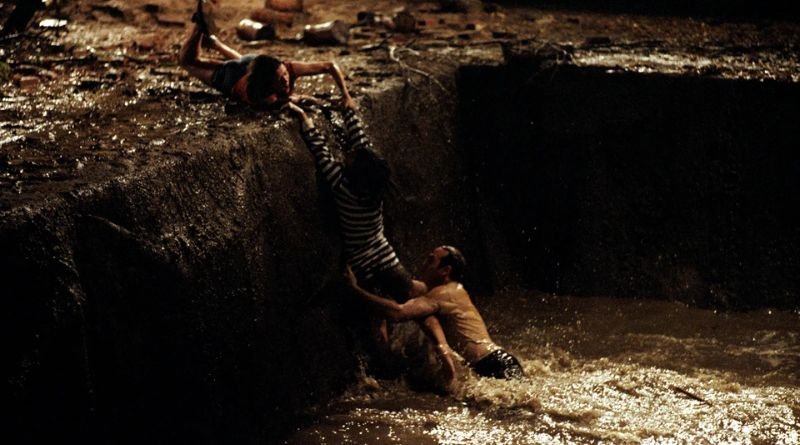The 1982 Movie Poltergeist: Did It Really Use Real Skeletons?

The 1982 Movie Poltergeist
Released in 1982, Poltergeist quickly became a classic of the supernatural horror genre. Directed by Tobe Hooper and produced by Steven Spielberg, the film captivated audiences with its chilling storyline, groundbreaking special effects, and eerie portrayal of a suburban family terrorized by malevolent spirits. Yet, while many viewers remember the film for its terrifying ghostly occurrences and creepy television scenes, another shocking aspect of Poltergeist has made it infamous in the world of movie production: the alleged use of real human skeletons in the filming.
This urban legend has persisted for decades, sparking debates and intrigue among fans, film enthusiasts, and skeptics alike. The rumors have only intensified due to the film’s eerie behind-the-scenes stories and tragic events surrounding its cast. But what’s the truth behind the claim that real skeletons were used in Poltergeist? In this article, we’ll explore the origins of the rumor, examine the facts, and address some frequently asked questions about this fascinating piece of movie history.
The Allegation: Real Skeletons in Poltergeist?
The most infamous claim surrounding Poltergeist is that the filmmakers used real human skeletons during a pivotal scene in the movie. This scene occurs when the protagonist, Diane Freeling (played by JoBeth Williams), is pulled into a pool filled with floating skeletons as she struggles to escape a supernatural force. The visual of Diane being surrounded by skeletons is one of the film’s most memorable and disturbing images, but the unsettling nature of the scene became even more pronounced with the rumors that the bones used weren’t fake, but real.
According to various sources, the skeletons used in this sequence were sourced from an actual burial ground rather than being custom-made props. It was said that, due to budget constraints, the production team decided to use real human remains, which were reportedly obtained from an Indiana company specializing in medical bones. The reasoning behind this decision, according to some accounts, was that it was cheaper to buy real skeletons than to make fake ones.
The Facts: What Really Happened?
While the story of real skeletons being used in Poltergeist has become a part of Hollywood folklore, the truth is a bit more complicated. Here’s what we know based on interviews with cast and crew members, as well as statements from the filmmakers themselves.
- The Use of Real Skeletons:
JoBeth Williams, who played Diane Freeling, has confirmed that the skeletons in the pool scene were, in fact, real. In an interview many years after the film’s release, she admitted that the production team used authentic human skeletons. She recalled being told by the film’s production designer, “These are real skeletons. They’re cheaper than getting fake ones.” This revelation shocked Williams, who said she was unaware of the skeletons’ authenticity at the time of filming. - Production Team’s Justification:
While the skeletons were real, the filmmakers did not intend to cause harm or disrespect. At the time, the use of real human remains was not as heavily regulated as it is today. In fact, it was common in the medical and film industries for real skeletons to be used for educational and cinematic purposes. The remains were said to have been obtained legally, though the exact origin of the bones remains somewhat unclear. - Sourcing the Skeletons:
The skeletons were allegedly purchased from a company that specialized in providing medical props to educational institutions and films. According to some reports, the skeletons were originally acquired from India, where human remains were sometimes sold to suppliers. There is no definitive evidence, however, to confirm that these skeletons were obtained from an actual burial site, though this remains a common part of the urban legend. - The Making of the Scene:
The infamous pool scene, which took place in the Freeling family’s backyard, was filmed using a combination of practical effects and special effects. The skeletons were placed in the pool, along with a variety of other props, to create a nightmarish atmosphere. While the scene remains one of the most iconic in horror history, it’s important to note that it was not the only time real human remains were used in Hollywood productions, though it may be one of the most controversial instances.
The Legacy: Why Did This Rumor Endure?
The myth that Poltergeist used real skeletons has endured for decades, becoming a part of the film’s eerie legacy. But why has this rumor persisted?
- Hollywood Horror Stories:
Movies like Poltergeist, with their supernatural themes and spooky atmosphere, are often surrounded by rumors and legends. The fact that the film dealt with dark and macabre subject matter—ghosts, hauntings, and death—likely played into the public’s acceptance of the skeleton rumor. When you pair such content with strange behind-the-scenes stories (including the tragic events surrounding some of the cast), it’s easy to see why the myth would grow. - Tragic Events and the “Poltergeist Curse”:
The deaths of several cast members soon after the film’s release fueled the urban legends surrounding Poltergeist. Most notably, actress Heather O’Rourke, who played Carol Anne Freeling, tragically died of cardiac arrest at the age of 12 just a few years after filming. Many people believed that the film was cursed, and the rumor of real skeletons in the pool scene only served to add to the mystery. - Misinformation and the Internet Age:
As the internet began to spread faster and reach more people, the story of real skeletons in Poltergeist became an internet sensation. Urban legends and horror stories thrive in online communities, and the Poltergeist skeleton tale fit neatly into this genre. As the rumor was passed along, it became increasingly difficult to separate fact from fiction.
The Ethics of Using Real Human Remains in Film
The use of real human skeletons in Poltergeist raises important ethical questions, even though the practice was not uncommon at the time. In modern filmmaking, there are strict guidelines regarding the use of human remains, and it is generally considered unethical and inappropriate to use real human bones in movies unless they are handled with the utmost respect and care.
In the case of Poltergeist, the use of real skeletons was a sign of a different era in filmmaking, one that was less concerned with the ethical implications of such choices. The filmmakers were likely acting within the standards of the time, though many today would view the practice as insensitive or disrespectful.
FAQs About the Real Skeletons in Poltergeist
1. Why did the filmmakers use real skeletons in Poltergeist?
The filmmakers opted to use real skeletons because they were cheaper than creating fake ones. At the time, real human skeletons were often used in film and education, as they were readily available from suppliers.
2. Were the skeletons obtained legally?
Yes, the skeletons were reportedly purchased from a company that specialized in providing human remains for educational purposes. While the exact origin of the skeletons is unclear, there is no evidence to suggest they were obtained illegally.
3. Was JoBeth Williams aware that the skeletons were real?
No, JoBeth Williams was not informed that the skeletons were real until after the film was completed. She only learned of their authenticity through a conversation with the production designer.
4. Did the use of real skeletons affect the movie’s legacy?
The use of real skeletons has contributed to the myth and eerie reputation of Poltergeist. It has become part of the film’s lore, contributing to the “Poltergeist curse” and rumors about the supernatural events surrounding the film.
5. Is it common for filmmakers to use real human remains?
While it was more common in the past, the use of real human remains in film has become rare today due to ethical concerns and legal regulations. Modern filmmakers generally prefer to use high-quality props or digital effects to create realistic skeletons.
Conclusion
The rumor that Poltergeist used real skeletons has persisted for over 40 years, partly due to the film’s supernatural themes and the eerie behind-the-scenes stories. While it is true that the filmmakers used real skeletons for one of the most memorable scenes in the movie, the choice was made for practical and financial reasons rather than any sinister intent. Though controversial by today’s standards, the use of real human remains in Poltergeist was not as unusual in the 1980s as it might seem now.
As the film continues to be celebrated as a genre-defining horror classic, the story of its skeletons remains an important—if unsettling—part of its legacy, adding to the mystery and dark allure that makes Poltergeist a fascinating and unforgettable part of film history.

